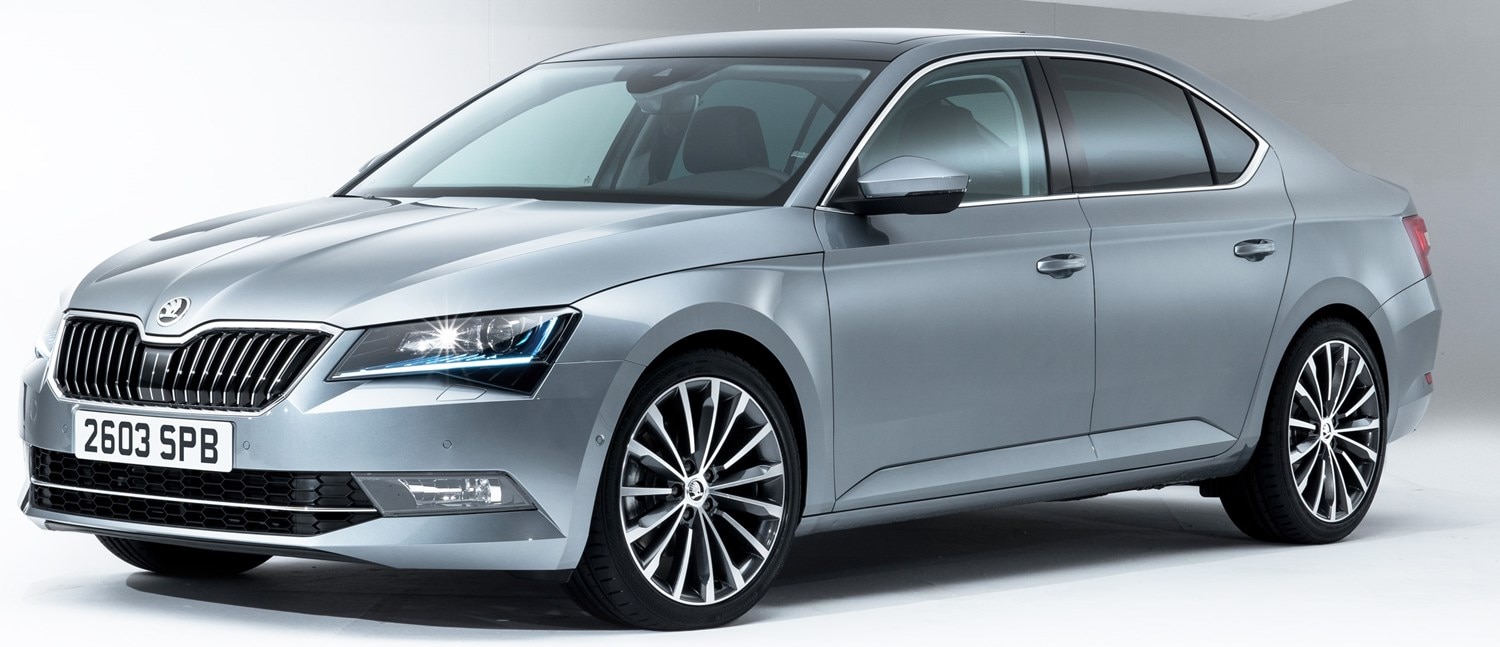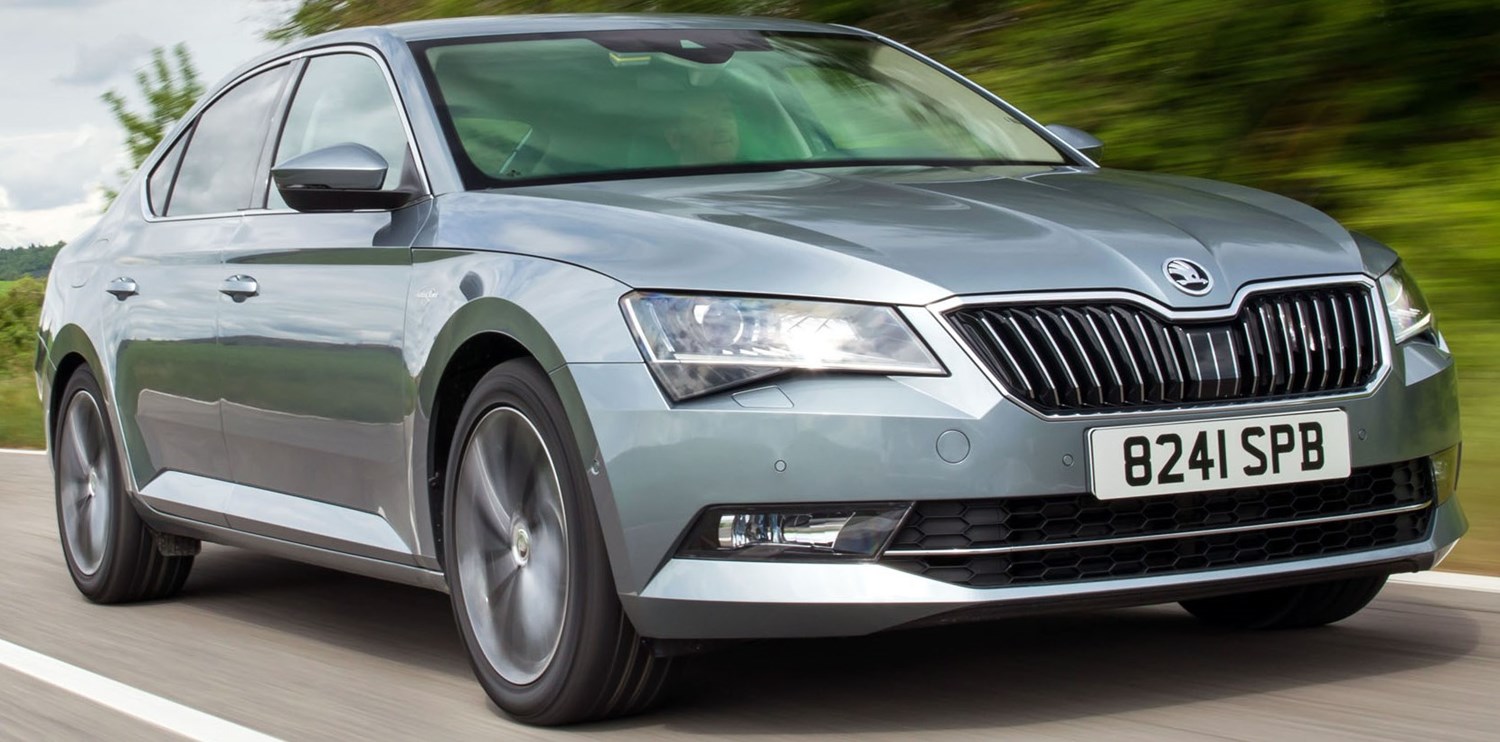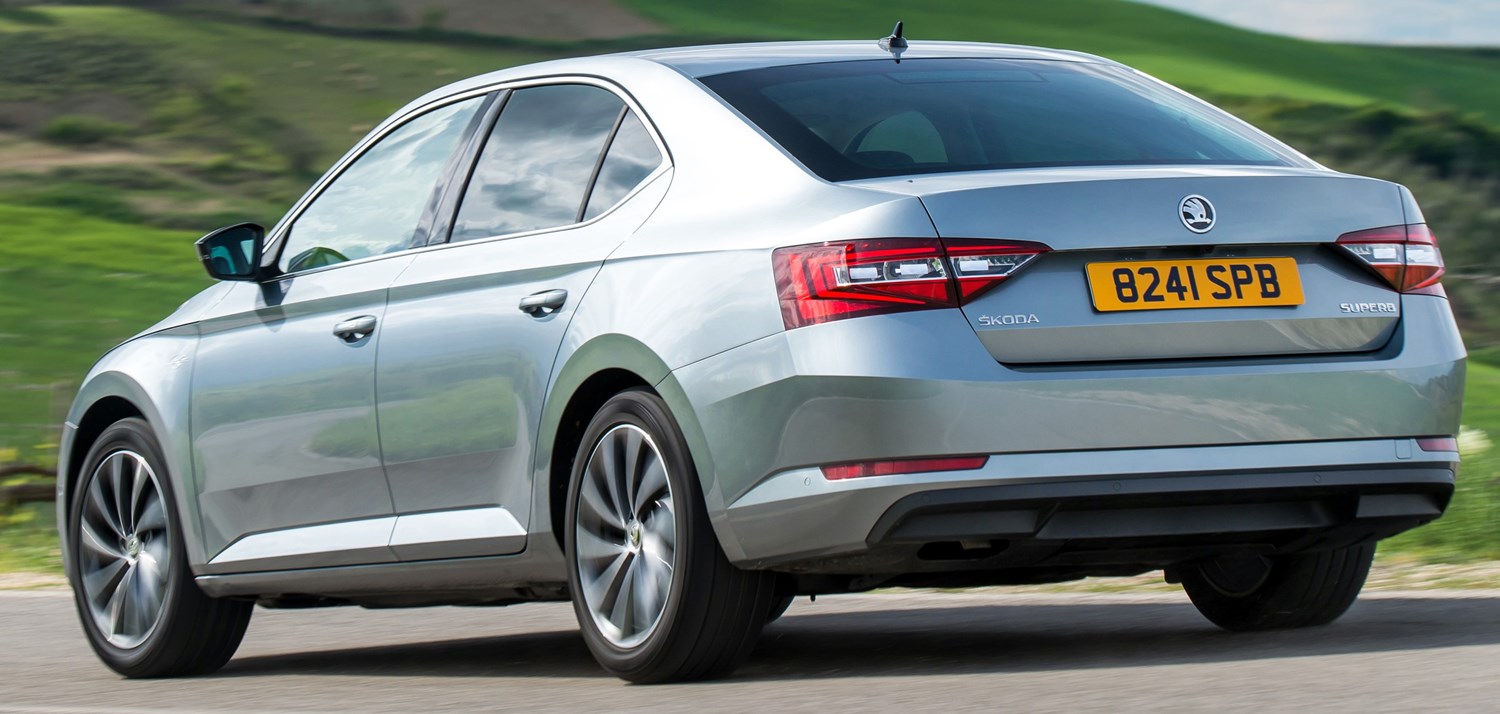Latest model
The third-generation Superb arrived on British shores in 2015, and was instantly a hit. It was arguably the Superb that came closest to living up to its name, with the only thing standing between it and greatness a lifeless and overly light steering rack.
It’s a good-looking beast, eschewing the rounded look of the old Superb and replacing it with an orgy of sharp angles and prominent creases. The interior is less exciting, but it’s functional and well put together, as well as being hugely spacious. The rear passenger space rivals that of a luxury limo, and the boot space is little short of cavernous.
Under the bonnet, there’s a range of four-cylinder engines producing between 118 and 276bhp, and varying degrees of economy. The fire-spitting 2.0-litre petrol probably won’t be the choice for those seeking the best environmental credentials, but the diesels are staggeringly parsimonious.
The diesels suit the car’s laid-back, comfortable road manners, which don’t really lend themselves to hard cornering, but offer a relaxed place to enjoy a long cross-country cruise. It soaks up the bumps unbelievably well, and the big, plush seats leave you backache-free even after long trips.
Value for money
The cheapest brand new Superb will set you back a very reasonable £19,945, and for that money you’ll get acres of space, alloy wheels and a touchscreen infotainment system.
Spending an extra £1,000 or so will upgrade to the roomier estate version, and top-of-the-range examples cost around £36,000.
You can pick cars up for far less, though, by delving into the used market. Prices start at less than £1,000 for a tatty first-generation car, but you can pick up decent ones for less than £2,000. Second-generation examples tend to cost a little more, but as the eldest of these are approaching 10 years old, you can still root out good ones at sensible prices.
You can get a few thousand pounds off the list price of a new one, too, by going for a pre-registered car, although this won’t give you the same warranty as a box-fresh model.
Looks and image
Although the original Superb looked much the same as the Passat that spawned it, the more modern cars have taken their own path.
Skoda will tell you that the modern Superb is designed to invoke the celebrated Czech crystal, with its range of sharp creases and defined lines, but whatever the inspiration, the Superb is simply a really good-looking car. No matter whether it’s found in estate or hatchback guise, it looks great from every angle.
Inside, it’s typical VW Group fare, with switchgear that will be familiar to owners of other products in the Skoda, Seat and Volkswagen stables, and the standard group infotainment system.
The cabin plastics, however, won’t quite live up to the standards we’ve come to expect from Volkswagen. The majority of the dash is made up of soft-touch materials, but there are one or two hard points in places you touch slightly less often, such as the lower door cards and the transmission tunnel.


